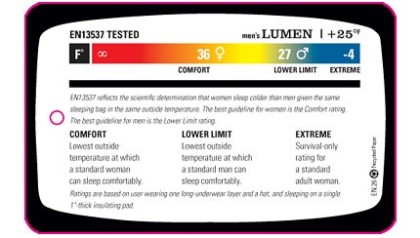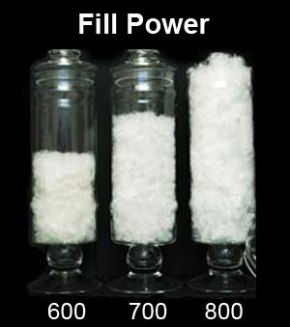v\:* {behavior:url(#default#VML);}
o\:* {behavior:url(#default#VML);}
w\:* {behavior:url(#default#VML);}
.shape {behavior:url(#default#VML);}
Normal
0
false
false
false
false
EN-CA
X-NONE
X-NONE
/* Style Definitions */
table.MsoNormalTable
{mso-style-name:”Table Normal”;
mso-tstyle-rowband-size:0;
mso-tstyle-colband-size:0;
mso-style-noshow:yes;
mso-style-priority:99;
mso-style-parent:””;
mso-padding-alt:0cm 5.4pt 0cm 5.4pt;
mso-para-margin-top:0cm;
mso-para-margin-right:0cm;
mso-para-margin-bottom:10.0pt;
mso-para-margin-left:0cm;
line-height:115%;
mso-pagination:widow-orphan;
font-size:11.0pt;
font-family:”Calibri”,”sans-serif”;
mso-ascii-font-family:Calibri;
mso-ascii-theme-font:minor-latin;
mso-hansi-font-family:Calibri;
mso-hansi-theme-font:minor-latin;
mso-fareast-language:EN-US;}
Summer is coming and that means camping season. The best way to have an enjoyable time camping is to get a good night’s sleep. To get a good night’s sleep you need the right sleeping bag for the conditions and trip you are undertaking. If you are too hot, too cold or too restricted you won’t sleep well and you won’t be a happy camper in the morning.
1. Choose the appropriate bag. If you are camping in the back yard in August you won’t need that 4 season minus 30 degree bag. Choose a bag that is suited to the conditions that you will be camping in most of the time. You can still use it in cooler times by wearing more clothes to bed or by adding a cotton or fleece liner to the bag to extend its range. If you use too warm a bag in warm weather you will be too hot and won’t get a good night’s sleep either.
2. Think about how you will be carrying the bag. The cheaper bags tend to use heavier material in the lining and the outer fabric. His makes the bag heavier and bulkier when packed. If you are car camping this doesn’t matter, if you are canoe or kayak camping it may not be a big issue either. But if you are backpacking then you want to get the smallest packing and lightest bag that you can afford to reduce pack weight and size that you will have to carry.
3. Choose the shape of the bag Some bags are rectangular in shape and generally these bags have more room for you to move about, can be zipped together more easily and can be opened out and used as a duvet more easily on warm nights. However they lack hoods and generally don’t seal you in as well as a Mummy shaped bag. But if you are car camping in summer in warm latitudes then a rectangular bag may suit your needs better. Generally for a better sleeping experience go with a Mummy shaped bag. Many better quality manufacturers will offer women’s and men’s bags. Women’s bags are generally shorter than men’s, wider at the hips and narrower at the shoulders and may have more insulation in different areas, for example around the feet.
4. Check out the temperature rating of the sleeping bag In the past there was no standard for temperature ratings on sleeping bags and it was left to the manufacturers to rate their sleeping bags as they saw fit. Now many manufacturers are adopting the rating standard used in Europe known as EN13537. If a bag uses this standard you will usually see a label like this on the bag.
The standard will give 3 or 4 temperatures for the bag, this may seem confusing but this guide will help you choose which one is most appropriate for your needs.
- The upper limit is the highest temperature at which a ‘standard’ adult man is able to have a comfortable night’s sleep without excess sweating. This may not be labelled
- The comfort rating is based on a ‘standard’ adult woman having a comfortable night’s sleep.
- The lower limit is based on the lowest temperature at which a ‘standard’ adult man is deemed to be able to have a comfortable night’s sleep.
- The extreme rating is a survival only rating for a ‘standard’ adult man. This is the temperature at which a standard man will survive the night but it will not be comfortable!
The transition zone, in between the comfort and lower limit, is usually considered as the best purchase guideline. Bearing in mind the average man and woman are generalisations and you will need to factor in how you sleep. It is also conducted assuming the person is wearing one base layer and a hat and is sleeping on a 1” mat. So if you have a thicker, warmer mat and wear more layers you may be able to use this bag at a lower temperature and still be comfortable.
Choose the insulation material. Here you have two choices Down or synthetic materials
Quick Guide to Down
Pros
- Is warmer than synthetic insulation ounce for ounce. No manmade fiber matches down in its warmth-to-weight ratio.
- Retains its shape and loft and, with proper care, can last a lifetime. No synthetic can beat down’s longevity. Down holds up better over years of use.
- Wicks body moisture and allows it to evaporate. Moisture wicking goes a long way in keeping you comfortable.
- Is highly compressible and lightweight. Although synthetic insulation has come a long way, it doesn’t hold a candle to down’s ultralight weight and amazing compressibility. Down is the preferred choice for backpackers who want to travel light in dry conditions.
Cons
- Loses its insulating properties when wet and is slow to dry. And if down gear is damp-especially in a humid climate-it will take a great deal of time to dry. Don’t count on leaving your wet sleeping bag to dry while you take a day hike. Chances are it may not be dry enough for you to sleep in that night.
- Requires special cleaning. Cleaning down gear is labor intensive. Harsh detergents and chemicals will break down its natural loft and luster. If you don’t dry clean your gear, only very mild detergents or down-specific cleaning products should be used.
- May contain allergens. Down is not entirely hypoallergenic. While the down may not cause an allergic reaction itself, lower quality down can harbor dust particles, debris, or other non-down materials, causing a reaction. However, higher quality down is cleaned according to strict industry standards. If you’re prone to allergies, it’s wise to invest in better quality down products.
- Costs a pretty penny. Down insulation is far more expensive than synthetic insulation, but it’s a great value for the avid outdoor enthusiast if you factor in down’s resistance to deterioration. Recreational campers and hikers can get the job done with synthetic gear, which is usually a more wallet-friendly option.
Fill Power
Fill power is the volume in cubic inches that one ounce of down can fill up. So, if the fill power of the down in your bag is 600, it means that one ounce of that down would fill 600 cubic inches. The same weight of 800 fill-power down fills up 800 cubic inches, creating 33% more loft. The official tests are done under lab conditions, with a particular protocol to ensure reliable results. For outdoor gear, lower-end fill power ratings start at 500-550, and the top end possible (this is open for debate) is around 900. Anything over 750 fill power can be considered expedition-ready, top-quality down.
Dry Down
A recent development has seen manufacturers treating the down to make it much more resistant to absorbing water and therefore better able to cope with damp environments. Sierra designs led this movement with its dri down bags but now many other manufacturers are exploring this technology. Be aware though that the dry down treatments will wear off with washing, at present they suggest that about 10 washes will be the life of the treatment.
Synthetic Fills
Synthetic insulation is essentially polyester threading that is molded into long single threads or short staples to mimic lofty down clusters. Thinner and lighter threads fill voids and trap warm air more effectively, while thicker strands sustain the loft and durability.
Quick Guide to Synthetics
Pros
- Is water resistant and provides insulation when wet. Synthetic fills are, at the very least, resistant to moisture while many will actually shed water rather than absorb it. These water-resisting properties allow the synthetic fill to retain the majority of its insulating properties when wet.
- Dries quickly. When a synthetic fill does get wet, the moisture is trapped in the air pockets between the fibers rather than in the fibers themselves. For this reason, synthetic fills will dry much faster than down fills-usually in a matter of minutes in direct sunlight.
- Is generally less expensive than down.
- Is easy to care for. Most synthetic fill sleeping bags or garments are machine washable and dryable.
- Is completely hypoallergenic. Because synthetics are manmade, they are, for the most part, hypoallergenic.
- Offers a greater range of options for those on a budget. Synthetic fills vary greatly in durability, bulk, weight, and price so there are more options available for beginning hikers or children who quickly outgrow their clothes.
Cons
- Can be bulky and less compact than down. Synthetics tend to be much bulkier and less compact than down, taking up valuable space when you’re trekking around.
- Heavier than down. Synthetic fill requires more weight to get the same warmth that the lighter down provides.
- Breaks down over time. Synthetic fibers gradually break down no matter how well you care them. You may find yourself replacing synthetic products quicker than you would down products.
- May cause fit problems. Some less-expensive synthetic fills can be stiffer than down and may not drape as well. Higher-end synthetic fills, though, can be hard to distinguish from down and fit just as well.
6. Get a compression sac and a storage bag Many companies supply both a compression sac and a storage bag with their sleeping bags. If not factor in the cost of these when comparing bags. A storage bag allows the sleeping bag to be stored folded a couple of times without compressing the bag too much; this will help to preserve the life of the filling and maintain the loft of the bag. A compression sac allows you to reduce the bulk of the bag by up to a third and this means that it will take up less space in your backpack, boat or bag.
7. Keep your bag dry. There is no worse feeling than arriving at your campsite on a wet day or after a long tiring paddle and finding that your sleeping bag is all wet. To avoid this feeling get a dry bag or waterproof compression bag to make sure that once you tent or shelter is sorted you have a nice dry, warm sleeping bag for the night.
For a fun guide to choosing a sleeping bag check out this Kevin Callan video clip
http://www.kevincallan.com/2011/02/16/ep2-choosing-a-sleeping-bag/#.UarP9JzElKY


